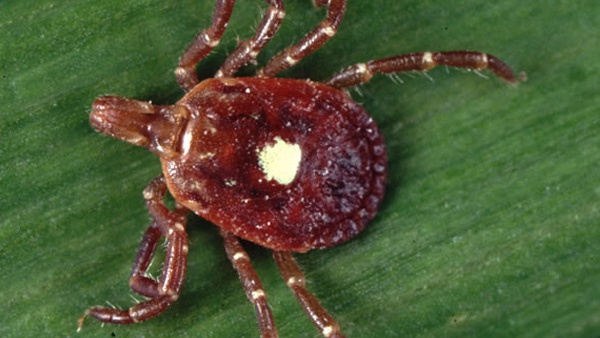Ticks will be on a rise this summer

(Story Courtesy of Kentucky Today)
FRANKFORT, Ky. (KT) – As temperatures rise and the days get longer, tick activity increases.
The Kentucky Department of Fish and Wildlife Resources say the public to take precautions against tick bites, which can transmit disease.
“Ticks are common across the state, and whether you’re hunting, hiking or spending time in your backyard, you’re probably going to encounter them,” said Dr. Christine Casey, wildlife veterinarian for Kentucky Fish and Wildlife. “The key to avoiding any health risk from a tick bite is by taking steps to protect yourself from being bitten in the first place.”
The most common tick species in Kentucky are the lone star tick, the blacklegged tick and the American dog tick. Whether you get sick from one tick bite depends on the type of tick, where it was acquired and how long it was attached. While few ticks transmit disease, tick bites should always be taken seriously. Lyme disease, common in the northeast and north central U.S., is of growing concern to Kentucky.
Take these precautions to avoid tick bites.
Before heading outdoors:
--Use Environmental Protection Agency (EPA)-registered insect repellents containing DEET, picaridin or oil of citronella.
--Treat clothing and gear with products containing 0.5% permethrin, which kills ticks on contact. Permethrin should not be applied directly to the skin.
--Take extra precaution if walking through wooded or brushy areas, tall grasses, woodpiles and leaf litter.
After spending time outdoors:
--Perform tick checks. Ticks are known to be found under the arms, in and around the ears, the back of the knees, in and around hair, between the legs and around the groin and waist. Be sure to check gear and pets as well.
--Shower soon after coming indoors as this can remove any unattached ticks.
--Tumble dry clothes in a dryer on high heat for 10 minutes to kill ticks attached to clothes.
If a tick is found attached to the skin, remove it as soon as possible. Use tweezers to grab the tick close to the skin and gently pull on the tick with steady pressure. Do not jerk or twist the tick as this can cause mouth parts to break off and remain in the skin. After removing the tick, clean the bite site and wash hands with soap and water or use an alcohol-based hand sanitizer. Dispose of a tick by submersing it in alcohol, placing it in a sealed bag/container, wrapping it tightly in tape or flushing it down the toilet.
If symptoms of a fever, rash, muscle or joint aches, or other types of illness arise within several weeks of removing a tick, consult a healthcare professional and tell them about the recent tick bite, along with when and where it occurred.

 DNR Announces Winners of Preservation Month Photo Contest
DNR Announces Winners of Preservation Month Photo Contest
 Aurora Woman Arrested for Battery on a Child
Aurora Woman Arrested for Battery on a Child
 Senator Braun’s bill to hire more air traffic controllers included in FAA reauthorization package set to become law
Senator Braun’s bill to hire more air traffic controllers included in FAA reauthorization package set to become law








